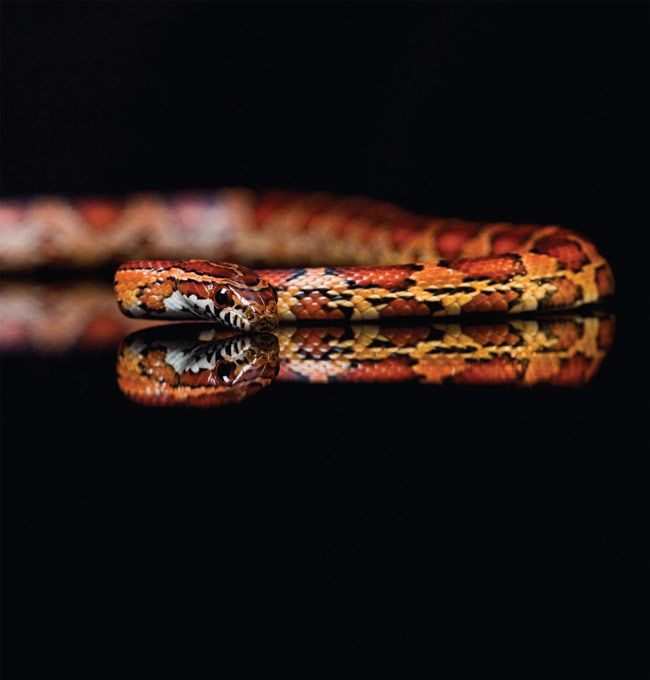Study Shows How Snakes Slither

Snakes can slither across flat surfaces without legs, but not entirely without help. That's because snake scales act as friction hooks which catch in rough points on surfaces, a new study shows.
Strangely, the finding could eventually lead to robotic snakes that move more naturally.
"When I first started studying snakes, we didn't have personal computers or robotics," said David Hu, a mechanical engineer at Georgia Tech, "but now we have the tools to emulate nature."
Hu has always found fascination in puzzling out the natural movements of creatures that have mystified scientists. As a younger researcher studying at MIT, he showed how mosquitoes can use their spindly legs to stand on surfaces ranging from walls to water.
The serpentine motion of snakes presents perhaps an irresistible challenge — decoding an ancient movement so unlike the flying, swimming, walking and running used by other animals.
Slither and slide
Biologists have previously observed the unusual properties of snake scales, but no one had tried to connect them with how snakes move until now. Some had speculated that snakes needed twigs or rocks to push against, but failed to explain how snakes navigated fairly featureless surfaces such as desert sands.
Sign up for the Live Science daily newsletter now
Get the world’s most fascinating discoveries delivered straight to your inbox.
"We wanted to come up with the simplest possible explanation for how snakes move on flat ground," Hu told LiveScience.
The Georgia Tech researchers first tested the snake scale friction by sliding unconscious snakes across flat surfaces. Snakes slid easily in the forward direction, but their scale friction resisted sliding backwards or sideways.
That test provided a friction coefficient that they could plug into computer models, which they used to predict how well snakes might move on different surfaces.
Next, Hu and his colleagues recorded the movement of the awakened snakes on very smooth fiberboard, and on cloth that provides a relatively rougher surface. The snakes had trouble moving on the smooth fiberboard, but could move more easily on a cloth-covered plank.
However, the snakes ran into movement difficulties again when researchers fitted them with a cloth jacket, which basically eliminated the scale friction.
Great galloping snakes
Snakes don't just slither when caught on time-lapse camera. They can also move in the well-known sidewinding motion, or even scrunch themselves up like an accordion.
"Snakes have a lot of different ways of moving, sort of like a horse that can trot or gallop," Hu said.
The study's model had successfully used the scale friction to predict much of the snake movement, but only accounted for 65 percent of the speed. Something else was missing.
Then the researchers noticed that the snakes were lifting parts of their bodies as they slithered forward on the recorded videos. Hu described it as "dynamic weight distribution" that allowed snakes to concentrate their weight on a few points and move more quickly.
"That can lead to sidewinding, but they can also more subtly shift their weight," Hu noted. "It will change the speed of snake a great deal."
The study represents a first step in better understanding serpentine movement, as detailed in the June 8 issue of the journal Proceedings of the National Academy of Sciences.
Hu pointed out that some of the snake's highest speeds are still unexplained by the model, and may have to do with snakes having precise muscle control over each scale.
"As we were waking them, we could see them twitching individual scales," Hu explained, and compared the snake-scale connection to goose bumps on human flesh.
If that sounds a bit creepy, don't worry — plenty of people feel the same way.
- Gallery: Snakes, Frogs and Lizards
- How Snakes Swallow Larger Creatures
- More Snake News, Images & Information










